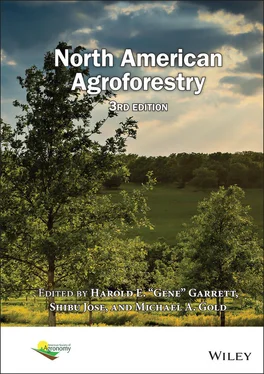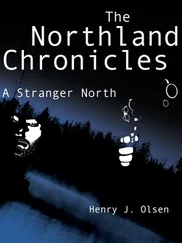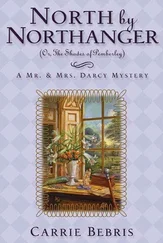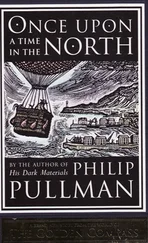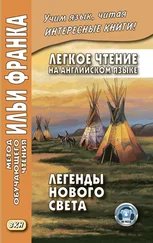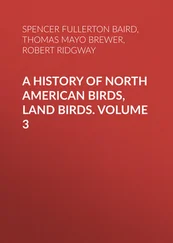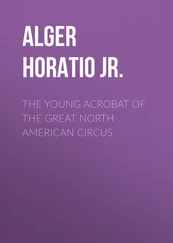North American Agroforestry
Здесь есть возможность читать онлайн «North American Agroforestry» — ознакомительный отрывок электронной книги совершенно бесплатно, а после прочтения отрывка купить полную версию. В некоторых случаях можно слушать аудио, скачать через торрент в формате fb2 и присутствует краткое содержание. Жанр: unrecognised, на английском языке. Описание произведения, (предисловие) а так же отзывы посетителей доступны на портале библиотеки ЛибКат.
- Название:North American Agroforestry
- Автор:
- Жанр:
- Год:неизвестен
- ISBN:нет данных
- Рейтинг книги:4 / 5. Голосов: 1
-
Избранное:Добавить в избранное
- Отзывы:
-
Ваша оценка:
- 80
- 1
- 2
- 3
- 4
- 5
North American Agroforestry: краткое содержание, описание и аннотация
Предлагаем к чтению аннотацию, описание, краткое содержание или предисловие (зависит от того, что написал сам автор книги «North American Agroforestry»). Если вы не нашли необходимую информацию о книге — напишите в комментариях, мы постараемся отыскать её.
Explore the many benefits of alternative land-use systems with this incisive resource North American Agroforestry
North American Agroforestry
North American Agroforestry — читать онлайн ознакомительный отрывок
Ниже представлен текст книги, разбитый по страницам. Система сохранения места последней прочитанной страницы, позволяет с удобством читать онлайн бесплатно книгу «North American Agroforestry», без необходимости каждый раз заново искать на чём Вы остановились. Поставьте закладку, и сможете в любой момент перейти на страницу, на которой закончили чтение.
Интервал:
Закладка:
9 Chapter 11Table 11–1 Characterization of the malodor VOCs compounds (based on Yasuhara et a...Table 11–2 . Concentrations of VOCs (μg m –3 ) at source, 15 m from t...Table 11–3. Additional desired characteristics and considerations for VEBs.
10 Chapter 12Table 12–1. The percentage of cross‐sectional area of horizontal (vertical insert...Table 12–2. Improved soil health of agroforestry and related ecosystem services....
11 Chapter 16Table 16–1. Economic methodologies commonly applied to assess agroforestry system...Table 16–2. Projected discounted cash flows for a 10‐yr elderberry orchard calcul...Table 16–3. Guidelines for accepting or rejecting agroforestry alternatives accor...
12 Chapter 17Table 17–1. A primer on concepts in human dimensions terminology.
13 Chapter 19Table 19–1. Specialty crops for which there are existing associations and co‐ops,...
List of Illustrations
1 Chapter 2 Fig. 2–1. Agroforestry priorities: Temperate and tropical. Fig. 2–2. Principles and benefits derived from the windbreak agroforestry pr...
2 Chapter 3 Fig. 3–1. Hypothetical relationship between perennialism and sustainability... Fig. 3–2. (A) Categorization of ecosystems in terms of the spatial and tempo... Fig. 3–3. Hypothetical changes in energy and nutrient fluxes, pools and cond... Fig. 3–4. Example of an amoeba diagram (NPV, net present value; BOD, biologi...
3 Chapter 4 Fig. 4–1. The production possibility curves for two species, A and B: (a) Po... Fig. 4–2. Net photosynthesis as a function of photosynthetically active radi... Fig. 4–3. Grain yield of alley‐cropped maize at the edge (average of eastern... Fig. 4–4. Extent of damage to trees by cattle during second year after plant... Fig. 4–5. Relationships between cattle stocking rate (livestock units, LU) a... Fig. 4–6. Acid detergent fiber, neutral detergent fiber, and crude protein o... Fig. 4–7. Effect of trees on air and soil temperature of holm oak dehesas: (... Fig. 4–8. Average leaf N (a) concentrations and (b) amounts in wild cherry a...
4 Chapter 5 Fig. 5–1. Wind flow patterns (A) over, (B) around, and (C) through a field w... Fig. 5–2. Changes in the pressure coefficient at ground level windward and l... Fig. 5–3. Wind speed reductions at different distances to the lee of windbre... Fig. 5–4. The amount of snow storage windward and leeward of a snow fence or... Fig. 5–5. Number and time of occurrence of male and female flowers of muskme... Fig. 5–6. The generalized case for crop yield responses for a field windbrea... Fig. 5–7. Cross‐section of a feedlot windbreak designed for wind and snow pr... Fig. 5–8. Generalized windbreak design for odor mitigation in central Iowa....
5 Chapter 6Fig. 6–1. Grazed open canopied ponderosa pine forest, eastern Oregon.Fig. 6–2. Cattle grazing Coastal bermudagrass beneath southern pines in a so...Fig. 6–3. Heifers in open pastures seeking relief from the heat by wallowing...Fig. 6–4. White clover forms a symbiotic relationship with rhizobial bacteri...Fig. 6–5. A thinning 3 yr prior to the collection of these loblolly pine cor...Fig. 6–6. Black locust trees planted into grass–clover pasture to fix N2, pr...Fig. 6–7. Recently pruned southern pine silvopasture planted in rows.Fig. 6–8. Cows grazing in an apple orchard in New England.Fig. 6–9. Five‐year‐old Douglas‐fir–subterranean clover–sheep silvopasture i...
6 Chapter 7Fig. 7–1. Historical trend of peer‐reviewed publications on temperate alley...Fig. 7–2. Photos of alley cropping with various trees and crop species: (a,b...Fig. 7–3. Frequency of genera utilized in the tree component (left panel) an...Fig. 7–4. Results from a literature survey of alley crop relative yields in...Fig. 7–5. A black walnut site prepared for conversion from row crops to a ha...Fig. 7–6. Chemical weed control along rows of 8‐yr‐old black walnut....Fig. 7–7 A well‐managed stand of black walnut alley cropped with a mixture o...Fig. 7–8. A medium‐ to low‐quality upland black walnut site managed primaril...Fig. 7–9. A map of four midwestern states (Missouri, Illinois, Indiana, and...
7 Chapter 8Fig. 8–1. Watershed and sub‐watersheds of a fourth‐order stream. The watersh...Fig. 8–2. Hillslope processes that transfer materials from upland and ripari...Fig. 8–3. Upper diagram shows floodplain and channel dimensional features. A...Fig. 8–4. The channel evolution model demonstrates the cycle of events that...Fig. 8–5. The geomorphic zones of a fluvial system. In the production zone,...Fig. 8–6. The river continuum concept depicts the relationship between the g...Fig. 8–7. The hydrologic cycle showing the paths of water movement through a...Fig. 8–8. Fate and temporal scale of precipitation in undisturbed watersheds...Fig. 8–9. The variable source area that contributes stormflow and base flow...Fig. 8–10. Hydrogeologic connections as they influence water movement throug...Fig. 8–11. Phosphorus movement through a riparian forest buffer. Riparian fo...Fig. 8–12. Nitrogen movement through a riparian forest buffer. Riparian fore...Fig. 8–13. The median and interquartile ranges of NO3–N (N = 58–97) and tota...Fig. 8–14. Daily precipitation (PPT) and volumetric soil water content (VWC)...Fig. 8–15. Daily precipitation and volumetric soil water content (VWC) at 5‐...Fig. 8–16. A corn and soybean field on land that was once covered by native...Fig. 8–17. Farming through the riparian zone to the edge of the stream modif...Fig. 8–18. A field drainage tile passes below the riparian buffer and carrie...Fig. 8–19. A stream channel that once meandered has been straightened, reduc...Fig. 8–20. Annual differences in water movement in a non‐tiled annual row‐cr...Fig. 8–21. Cattle grazing in riparian zones damage stream banks and add poll...Fig. 8–22. Alterations in stream discharge and morphology brought about by a...Fig. 8–23. A riparian forest buffer model. In Zone 1, tree removal is genera...Fig. 8–24. A riparian management system model. This model consists of four p...Fig. 8–25. The multispecies riparian forest buffer model. This buffer consis...Fig. 8–26. Riparian buffer widths by various functions. The function requiri...Fig. 8–27. Buffer design modification to accommodate subsurface drainage til...Fig. 8–28. A before‐and‐after sequence showing the results of riparian buffe...Fig. 8–29. Willow posts and stakes for bank stabilization. Posts range in si...Fig. 8–30. A 5‐m‐wide stream bank “blowout” that occurred within the first y...Fig. 8–31. Manual installation of small willow posts and stakes. Notice that...Fig. 8–32. Growth of the willow posts and stakes after 4 yr. The bank is now...Fig. 8–33. A willow post porous dam placed in a gully. Willow posts are poun...Fig. 8–34. A joint planting where willow posts are used in conjunction with...Fig. 8–35. A live fascine used to anchor the bottom of geotextile. Grass is...Fig. 8–36. A brush mattress installation. The base of the stems are buried i...Fig. 8–37. A combination of live and dead materials used in the stream bank...Fig. 8–38. Backhoe sloping a 4.5‐m vertical stream bank to a 2:1 slope as pa...Fig. 8–39. Eastern redcedar being cabled to posts to protect the toe of the...Fig. 8–40. Coconut fiber geotextile being installed up and down the slope, w...Fig. 8–41. Willow planting after installation of the redcedar revetment, the...Fig. 8–42. An installation similar to the one in Figures 8–35 through 8–39 b...Fig. 8–43. Bioengineering system shown in Figure 8–39 2 mo after installatio...Fig. 8–44. A 1‐yr‐old constructed wetland showing the outflow structure....
Читать дальшеИнтервал:
Закладка:
Похожие книги на «North American Agroforestry»
Представляем Вашему вниманию похожие книги на «North American Agroforestry» списком для выбора. Мы отобрали схожую по названию и смыслу литературу в надежде предоставить читателям больше вариантов отыскать новые, интересные, ещё непрочитанные произведения.
Обсуждение, отзывы о книге «North American Agroforestry» и просто собственные мнения читателей. Оставьте ваши комментарии, напишите, что Вы думаете о произведении, его смысле или главных героях. Укажите что конкретно понравилось, а что нет, и почему Вы так считаете.
